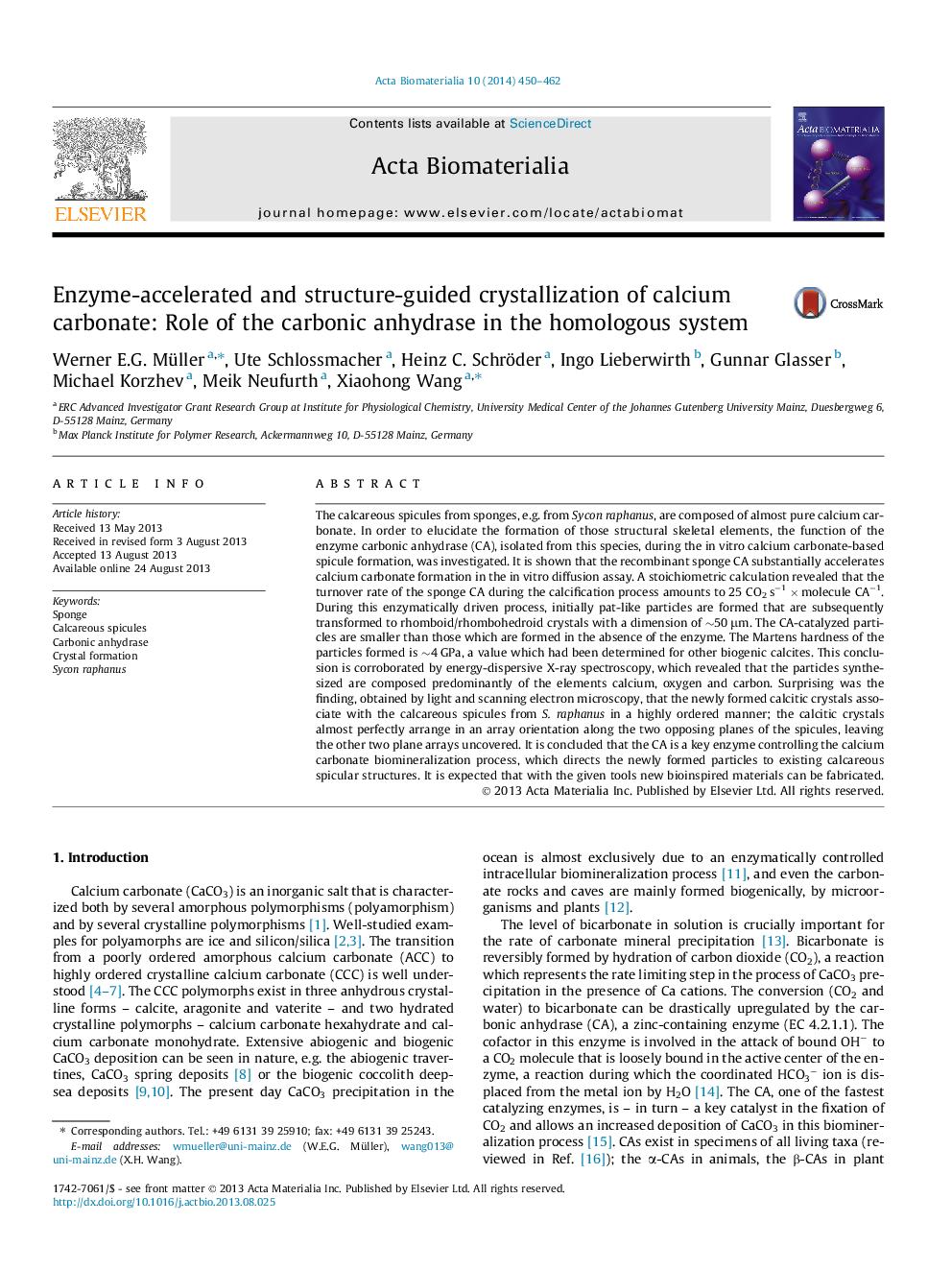| کد مقاله | کد نشریه | سال انتشار | مقاله انگلیسی | نسخه تمام متن |
|---|---|---|---|---|
| 10159441 | 48 | 2014 | 13 صفحه PDF | دانلود رایگان |
عنوان انگلیسی مقاله ISI
Enzyme-accelerated and structure-guided crystallization of calcium carbonate: Role of the carbonic anhydrase in the homologous system
ترجمه فارسی عنوان
کریستالیزاسیون کربنات کلسیم با استفاده از آنزیم تسریع شده و ساختار: نقش آنیدراز کربنیک در سیستم همولوگ
دانلود مقاله + سفارش ترجمه
دانلود مقاله ISI انگلیسی
رایگان برای ایرانیان
موضوعات مرتبط
مهندسی و علوم پایه
مهندسی شیمی
بیو مهندسی (مهندسی زیستی)
چکیده انگلیسی
The calcareous spicules from sponges, e.g. from Sycon raphanus, are composed of almost pure calcium carbonate. In order to elucidate the formation of those structural skeletal elements, the function of the enzyme carbonic anhydrase (CA), isolated from this species, during the in vitro calcium carbonate-based spicule formation, was investigated. It is shown that the recombinant sponge CA substantially accelerates calcium carbonate formation in the in vitro diffusion assay. A stoichiometric calculation revealed that the turnover rate of the sponge CA during the calcification process amounts to 25 CO2 sâ1 Ã molecule CAâ1. During this enzymatically driven process, initially pat-like particles are formed that are subsequently transformed to rhomboid/rhombohedroid crystals with a dimension of â¼50 μm. The CA-catalyzed particles are smaller than those which are formed in the absence of the enzyme. The Martens hardness of the particles formed is â¼4 GPa, a value which had been determined for other biogenic calcites. This conclusion is corroborated by energy-dispersive X-ray spectroscopy, which revealed that the particles synthesized are composed predominantly of the elements calcium, oxygen and carbon. Surprising was the finding, obtained by light and scanning electron microscopy, that the newly formed calcitic crystals associate with the calcareous spicules from S. raphanus in a highly ordered manner; the calcitic crystals almost perfectly arrange in an array orientation along the two opposing planes of the spicules, leaving the other two plane arrays uncovered. It is concluded that the CA is a key enzyme controlling the calcium carbonate biomineralization process, which directs the newly formed particles to existing calcareous spicular structures. It is expected that with the given tools new bioinspired materials can be fabricated.
ناشر
Database: Elsevier - ScienceDirect (ساینس دایرکت)
Journal: Acta Biomaterialia - Volume 10, Issue 1, January 2014, Pages 450-462
Journal: Acta Biomaterialia - Volume 10, Issue 1, January 2014, Pages 450-462
نویسندگان
Werner E.G. Müller, Ute Schlossmacher, Heinz C. Schröder, Ingo Lieberwirth, Gunnar Glasser, Michael Korzhev, Meik Neufurth, Xiaohong Wang,
